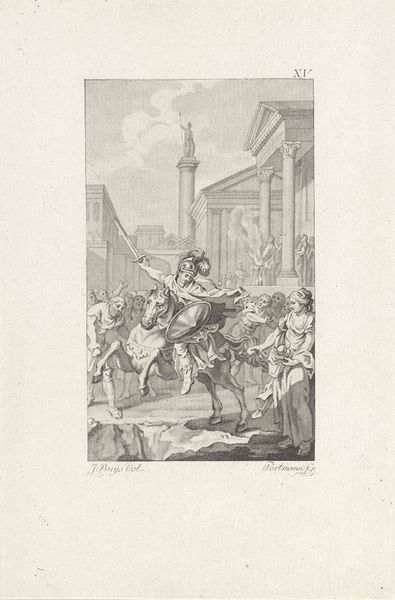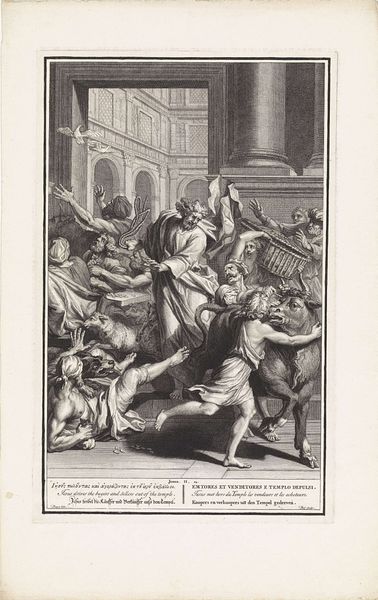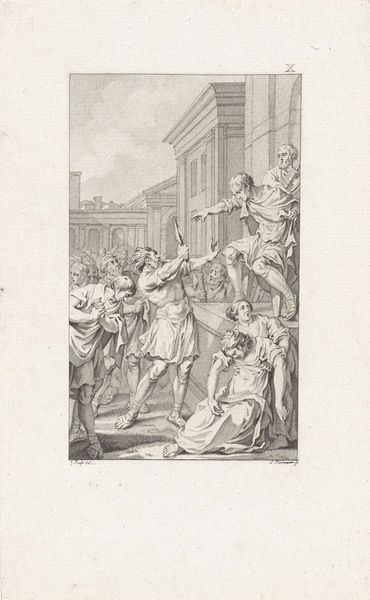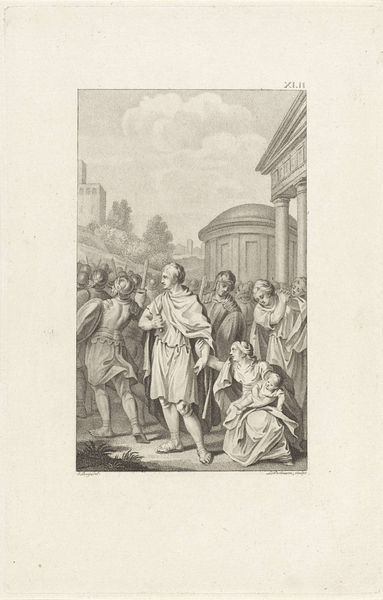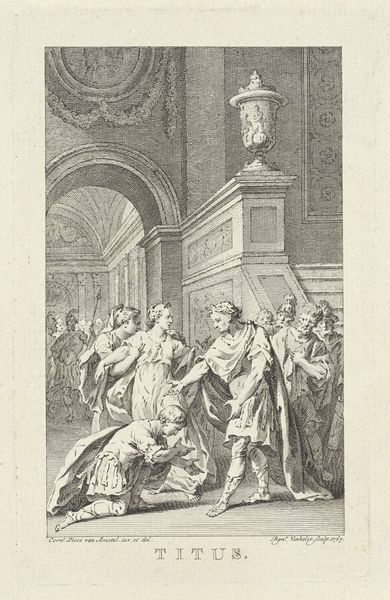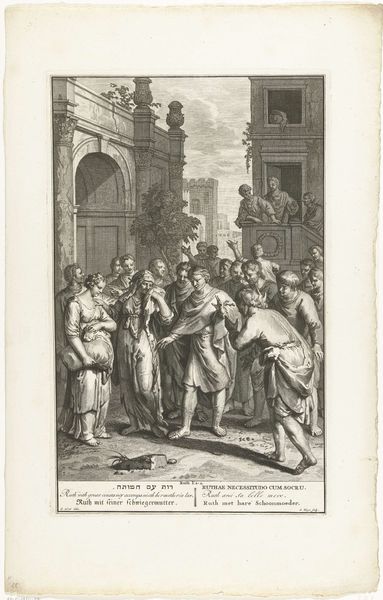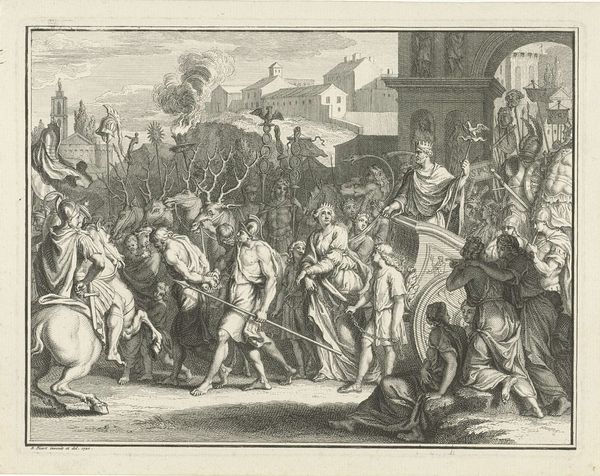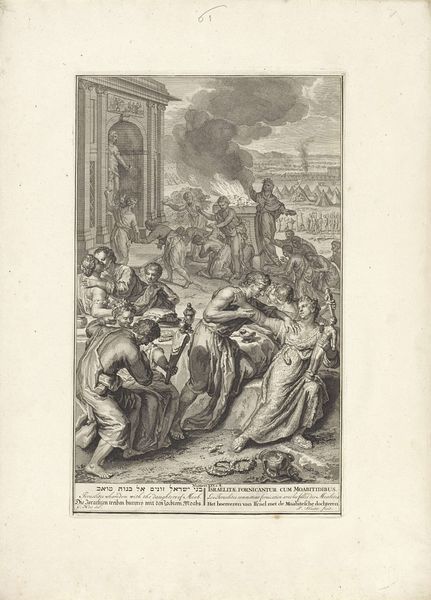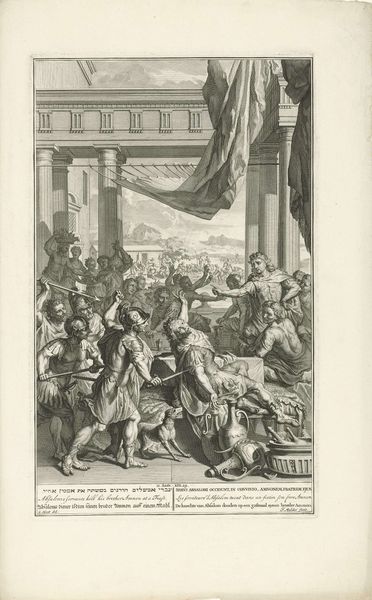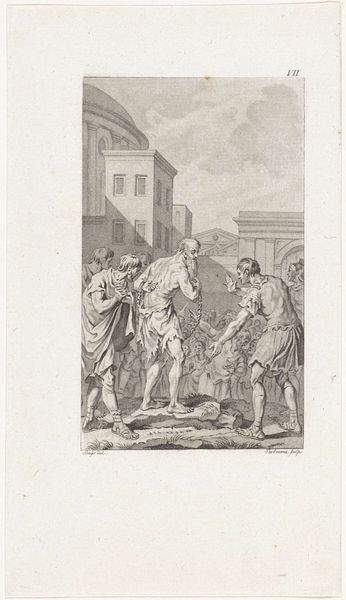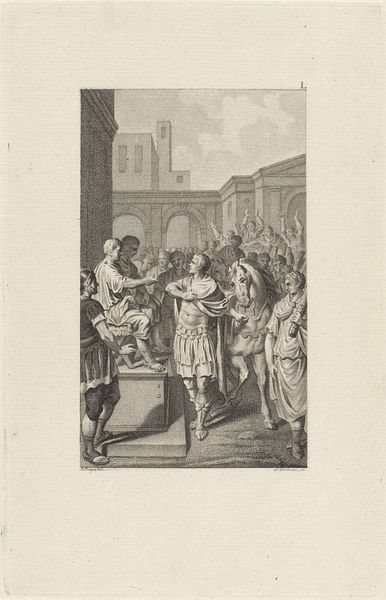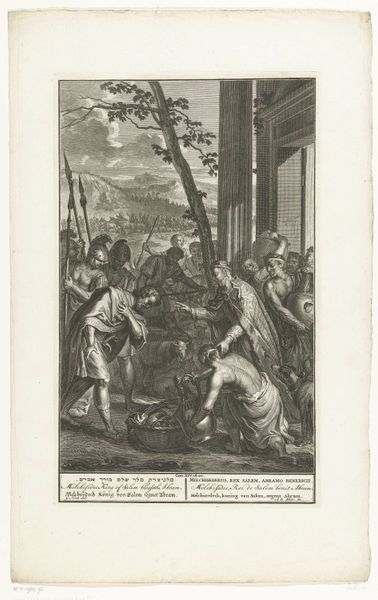
print, engraving
neoclacissism
narrative-art
old engraving style
figuration
history-painting
engraving
Dimensions: height 206 mm, width 133 mm
Copyright: Rijks Museum: Open Domain
Ludwig Gottlieb Portman’s print captures the death of Tiberius Gracchus in ancient Rome, immortalizing a moment of political and social upheaval. The scene is dominated by the image of the ax, a potent symbol of power and brutality, raised high above the fallen Gracchus. This motif echoes through art history. Think of the execution scenes in Renaissance paintings, or even the sacrificial imagery of ancient cultures. The ax is not merely a tool of death; it embodies the violent clash between authority and the individual, resurfacing across epochs in varied forms. Consider how, in different contexts, the ax might transform—becoming the guillotine during the French Revolution, a stark reminder of how societal tensions manifest in recurring symbols of violence. This visual language taps into a collective memory, stirring subconscious fears and anxieties about power, justice, and mortality. The emotional impact is raw, engaging viewers on a primal level, as the act of violence transcends its immediate historical context. We see this symbol's cyclical return and evolution, laden with new meanings, each time echoing the past.
Comments
No comments
Be the first to comment and join the conversation on the ultimate creative platform.
